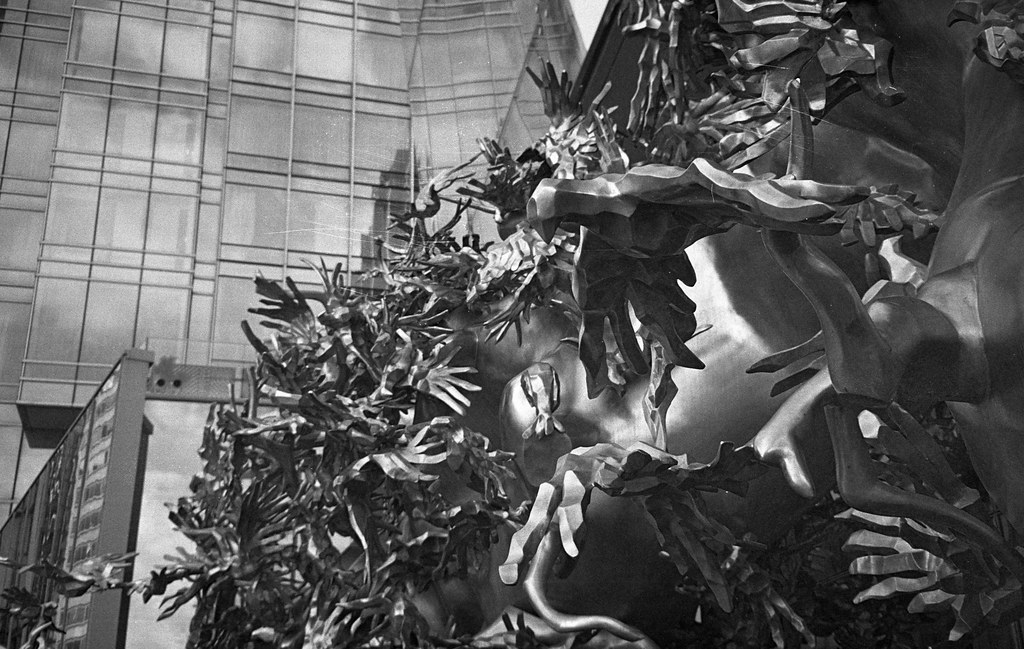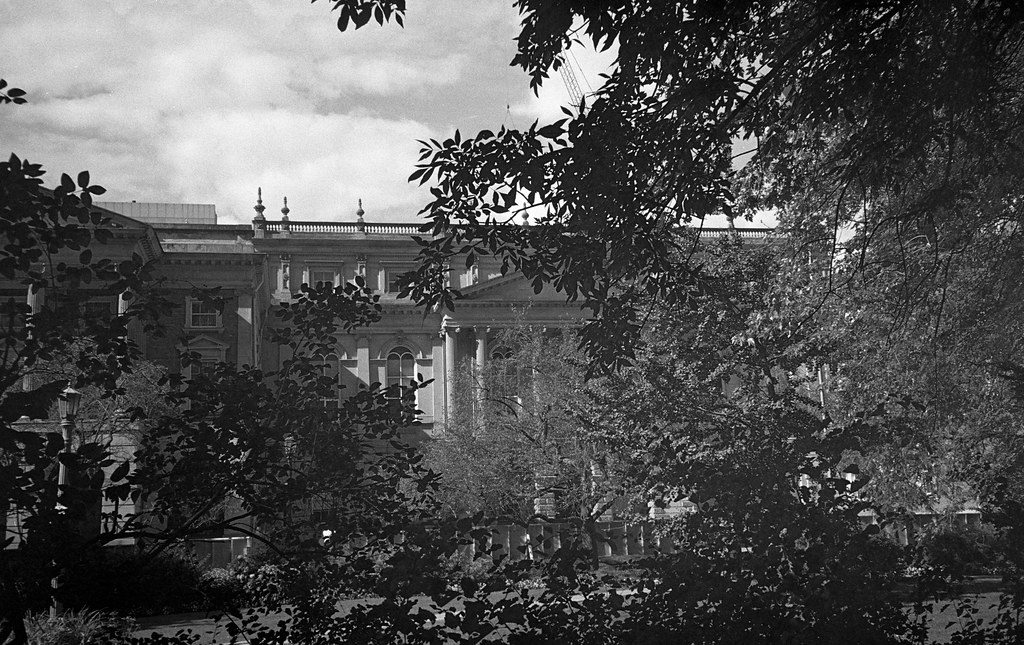It seems these days the hottest craze among the hipsters and celebrities is using the premium compact 35mm cameras of the 1980s through early 2000s. And while some cameras carry a steep price-tag, others just don’t have the same street cred. What I mean by that is that you don’t see those cameras your childhood (if you’re of a particular vintage) being hoisted on the Instagram feeds of celebrities during their seemingly perfect lives. I’m not one to drop 500$ on a point-and-shoot, so when I was offered up a Pentax Espio 115M I figured what the heck! After speaking about these cheap and cheerful cameras to my fellow camera reviewers, I realised I had a bit of a sleeper on my hands, and they were right. I am pretty impressed at not only the quality of the camera but the image quality it outputted. Special thanks to Pastor Howard for providing this incredible camera for a review.

Camera Specifications
Make: Pentax
Model: Espio 115M/IQZoom 115V
Type: Point-And-Shoot
Format: 135 (35mm) 36x24mm
Lens: Fixed, Pentax Zoom Lens 38-115mm f/3.9-10.5
Year of Manufacture: 1996


Background
The compact 35mm is nothing new for Pentax having released their PC35AF in 1982. While the fixed-lens compacts were certainly cheap to produce and purchase and you could fit a fixed lens and a fast aperture (the PC35AF had a 35mm f/2.8 lens) there seemed to be a need to have a zoom lens. While many companies achieved this by having multiple selectable lenses, Pentax desired to include a powered lens. In 1986 Pentax released the IQZoom and would be the first compact 35mm camera with a powered zoom lens, with a 35-70mm lens. The camera went on to win two awards from the Technical Image Press Association and the European Imaging and Sound Association. Hoping to bank on the continued success of the IQZoom and aiming at the higher end market Pentax released the Espio in 1992. Unlike the bulky IQZoom, the Epsio was a far sleeker camera; it looks close to what you see in the Contax T2 premium compact. However, the difference did not stay apart long; the Espio and IQZoom lines seemed to follow a parallel course. The original Espio 115 saw release in 1992 featuring a 38-115mm f/4-8.8 lens and proved a popular unit, Pentax released a 75th Anniversary 115SE in 1994 with the same specs but a fancy anniversary sticker. In 1996 the 115M was released with a couple of changes from the original model, a CR2 battery replaced the bulky CR123A, and a slightly different lens was attached, while it remained a 38-115mm the apertures were tweaked to f/3.9-10.9. The 115G removed the handgrip, and the 115V saw a greater amount of metal included in the construction. Overall the Espio line proved a successful line of cameras with several featuring a wide-angle lens in either 24mm or 28mm on the wide end. But the last model to see production would be the Espio 115V in 2002. Sadly the name would be dropped in their first digital compact cameras.


Impressions
When I first saw the 115M, I wasn’t too impressed. It’s fairly small and looked like a camera that I had much of my time in the 1990s captured on; my family used Minolta cameras. Fairly small, sliver plastic shell with rubberised grips. The lens specs looked terrible with an f/3.9 at the wide end and f/10.9 at the tele end. But when they say don’t judge a book by its cover, the 115M certainly fits the bill. The camera is super light and fairly compact. While you can’t fit it in your average pant’s pocket, a jacket pocket will certainly work. The controls are as basic as they come with most of what you need to worry about being big and right where you want them to be, the silver shutter release and the zoom control. While they seem a little squishy in operation, it does get a little easier the more you use the camera. The other controls are small black rubber buttons, and I just left these alone. One of the best things about the camera is that the lens, even at the widest point sticks out from the body, so there’s little chance of the dreaded finger in front of the lens. A problem I often had with one of my family’s old cameras. But once I got past the initial look, I found the fit and finish of the camera rather nice.


Experiences
I probably looked a little silly walking down the streets of Toronto with the 115M hanging around my neck. The long lanyard certainly added to that whole 1990s family snapper acetic. When it comes to operations, the camera is what you’d expect. It’s super simple, you only need to concern yourself with the zoom control and shutter release. Composing your images with the offset viewfinder might take a bit to adapt yourself to if you’re used to SLRs. The 115M does have frame lines inside the viewfinder (which is pretty close to centre) to assist with composition and certainly gave me a leg up. There’s little in the way of feedback in the viewfinder, no surprise there, but the green LED to the side indicates focus and a red one shows that the flash will trigger. Now the flash is set to automatic by default; you can control the flash mode with red-eye reduction; there’s also a bulb mode that disables the flash, but it does set the shutter speed to 1/2 second. Sadly there is no way to turn off the flash. When it comes to response, don’t expect lightning speeds. There is a good deal of shutter lag from when the release is pressed to when the camera takes the picture. And while I didn’t get an exact time in my tests, it seems to be around 1-2 seconds. When out shooting buildings it’s not such a big deal, but I wouldn’t recommend this too much for street photography. Though it may produce a unique set of images. The same can be said about the zoom function; it is fairly leisurely in moving the lens from the widest to the longest and back again.


Optics
The one thing that surprised me about the 115M is the optics. Usually, when it comes to these cheap and cheerful compacts aimed at the family market, there are some concerns with the image quality being outputted. Softness on the edges, maybe a bit of vignetting at the edges. But honestly, the lens in the camera is one of the best I’ve encountered in a camera of this era and style. The images are sharp corner to corner, and there’s no vignetting even at the wide end. But let’s talk specs here. I’m a big fan of the 35mm focal so having the camera that is 38mm at the wide end is close, and many swear by the 40mm or 45mm lens for a daily carry. And frankly, it is at the 38mm focal length where the camera shines, as you have the biggest aperture. I wasn’t too pleased with the lens at 115mm, not because of any optical difficulties but because you have the biggest aperture reduced to f/10.9. Even with a 400-speed film loaded you’re going to pop the flash which at that length does little. And while the lens does fall on the aperture side of things, even at f/3.9 you’re not going to do much in the way of low-light photography, although the camera compensates with the faux-bulb mode.


Lowdown
The 115M is not a Contax or Yashica T-Series, nor does it pretend to be. And that is the camera’s biggest strength. It only took a roll of film for me to find an amazing compact camera for a quick jaunt into the city or where I don’t have room to carry anything bigger. You have a camera that does the job and has an amazing lens that does the job. It may not be one of those license-built Zeiss jobs on the T-Series cameras, but it certainly produces an image I’m happy with. In many cases you can have the camera for less than 50$, anyone selling these for more is lying to themselves. These are honestly 30-40$ cameras at most. But you don’t just have to stick to the 115M; the Espio line is filled with excellent cameras. The two that get the most love are the Espio 80 and the Espio Mini. The Mini, however, does command a high price on the used market, may going for over 200$, the 80 is far closer to the prices of the 115M. But either way, you go, an Espio will fill that compact camera hole in your shelf without question.


Further Reading
Don’t just take my word on the Espio 115M, you can check out the reviews by other awesome camera reviewers!
35mmc – The Pentax Espio 115M Gold Mini Review By Phil Harrison
35mm Hunter – Why A Pentax Espio Should Be Top Of Your Compact Film Camera Wishlist
Beau Photo – Camera Speed Dating – Pentax Espio Mini
35mmc – The Pentax Espio 80 – My Summer Holiday Snapper
Japan Camera Hunter – Mini Review – The Pentax Espio Mini
3 Comments